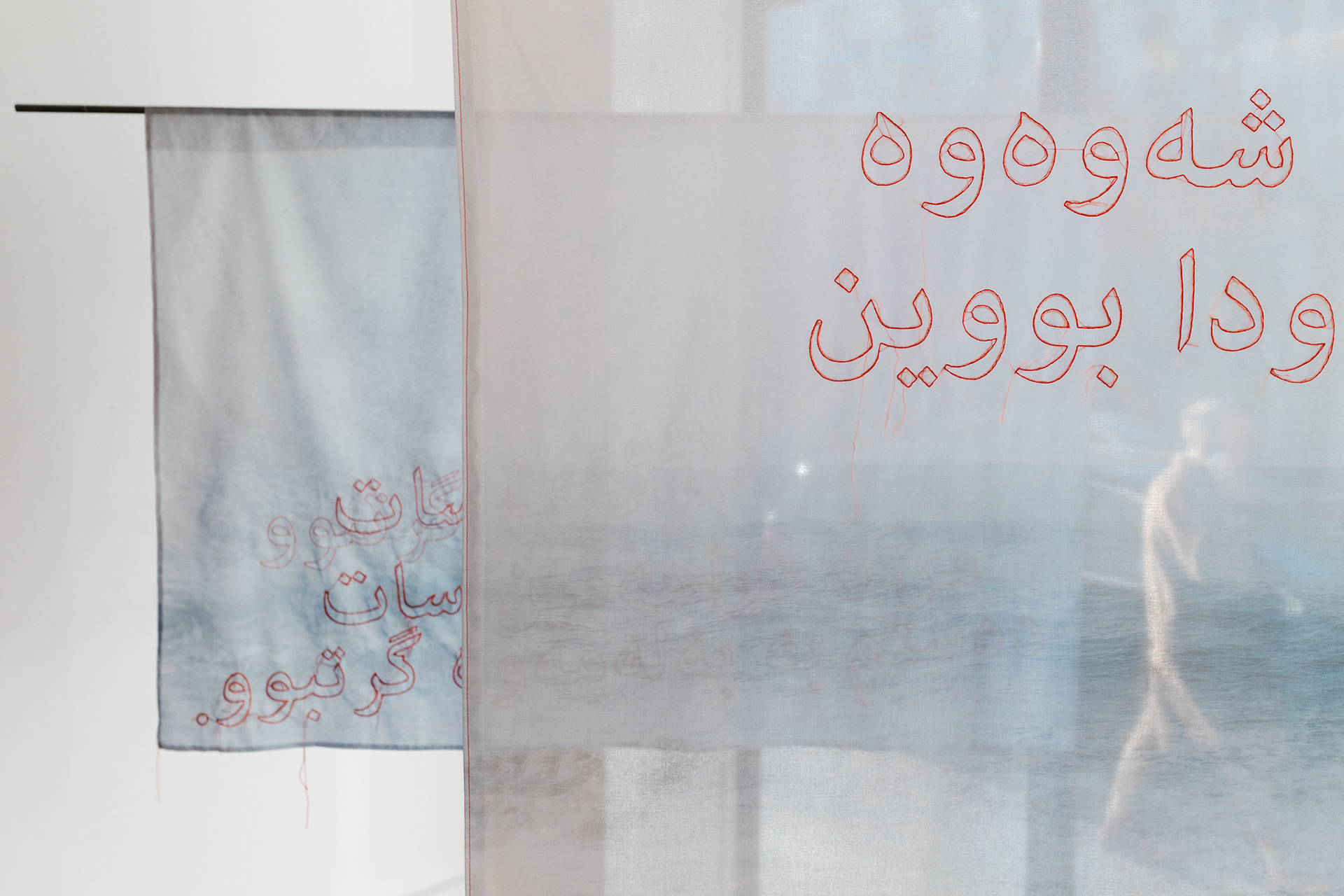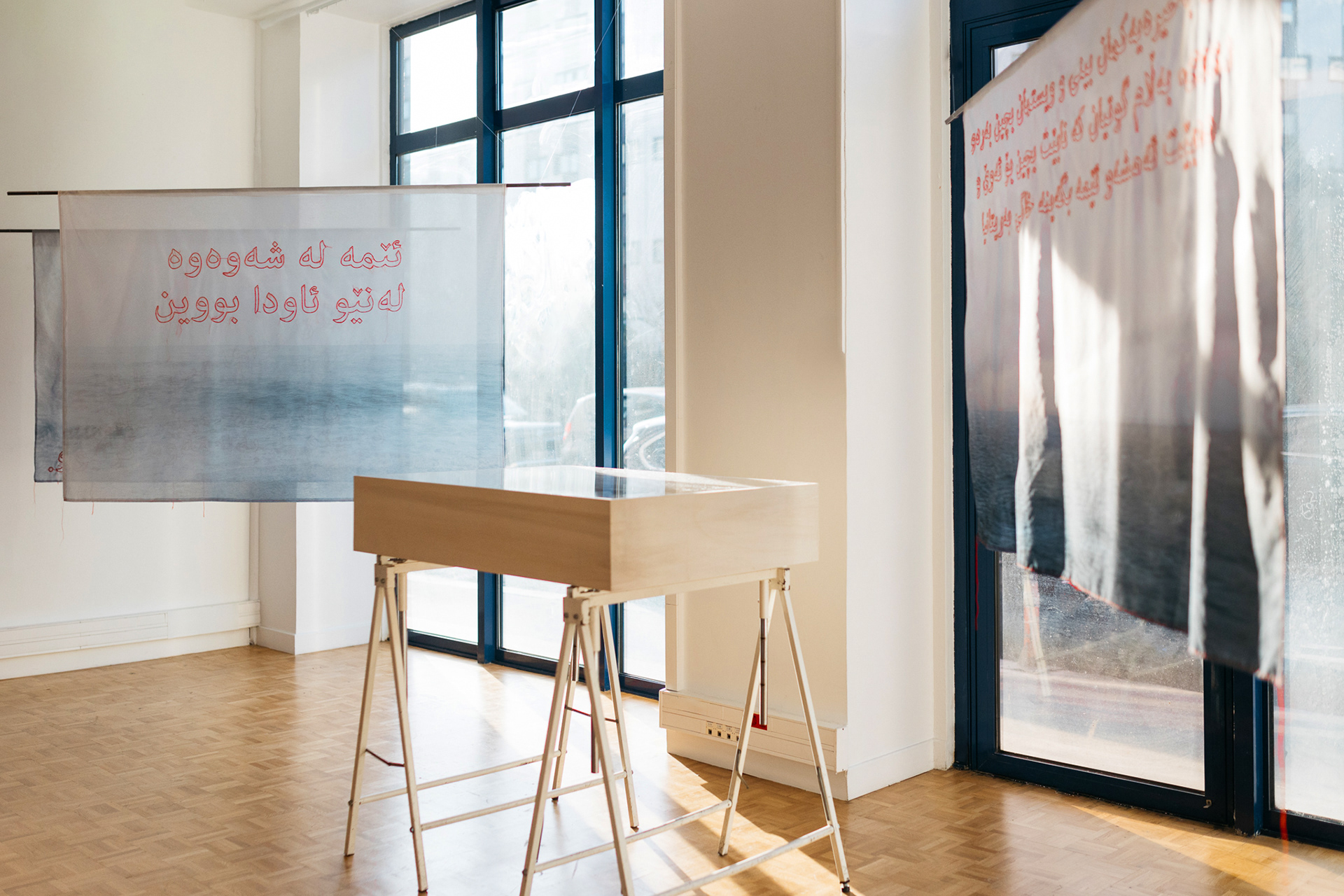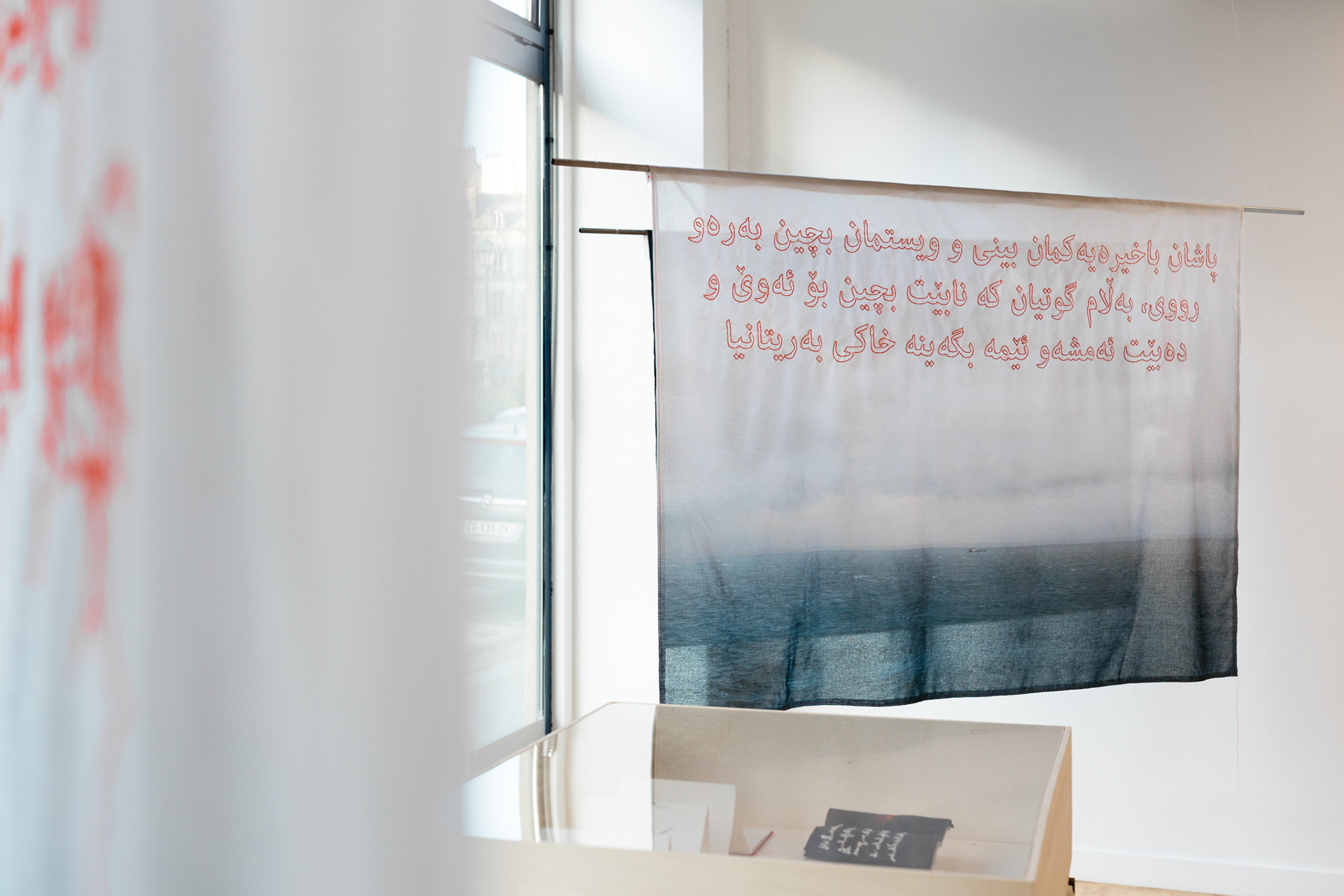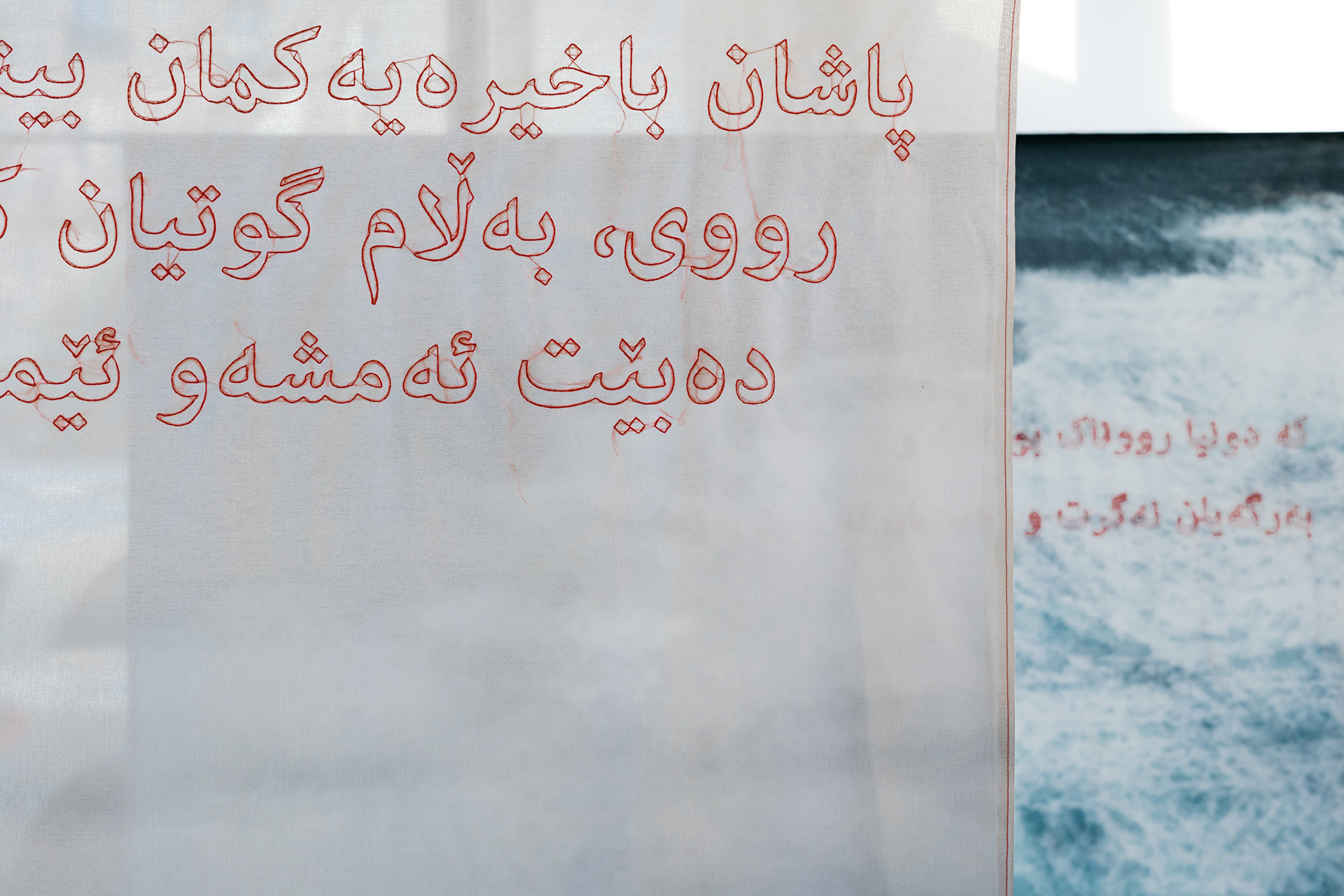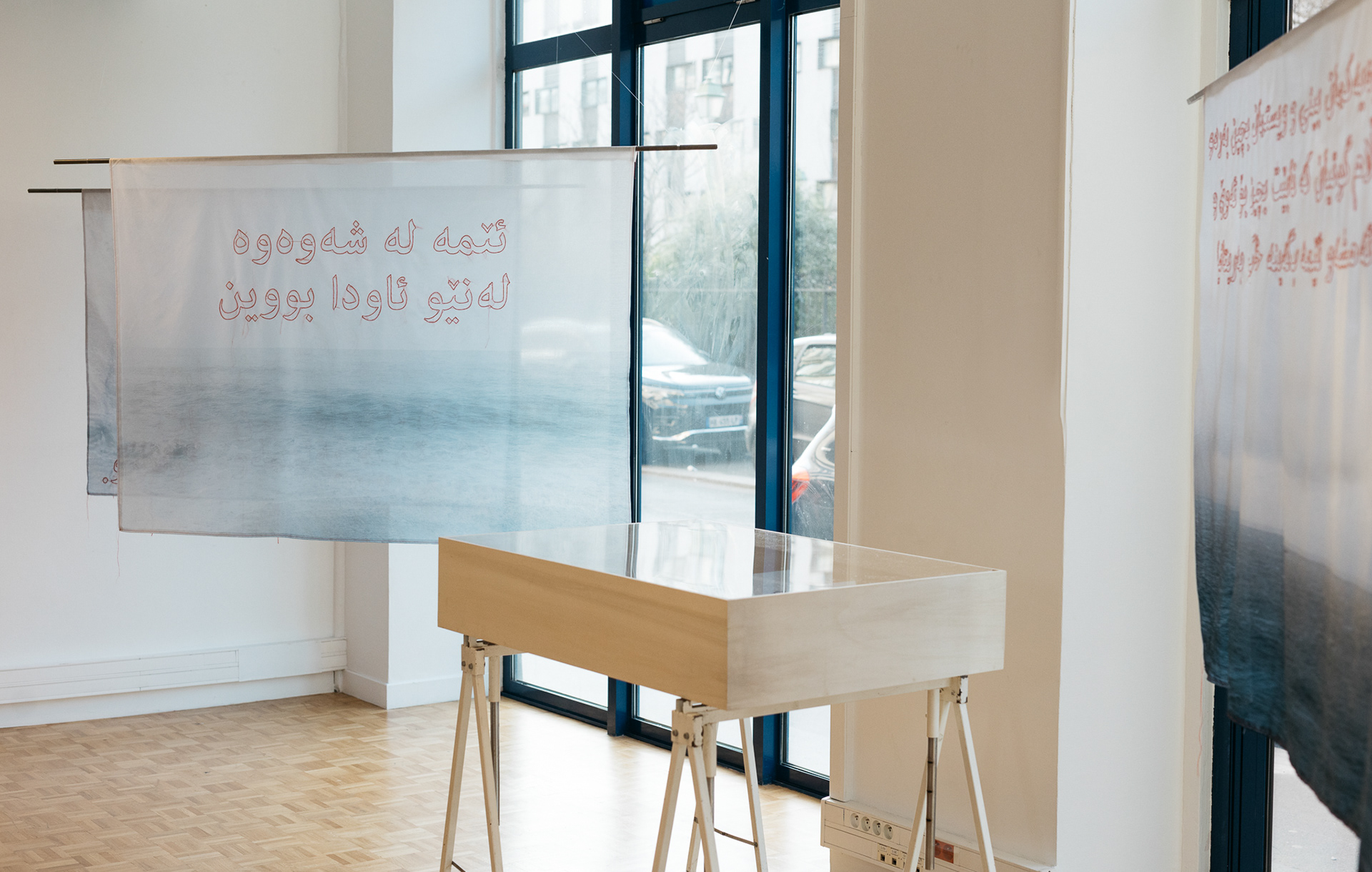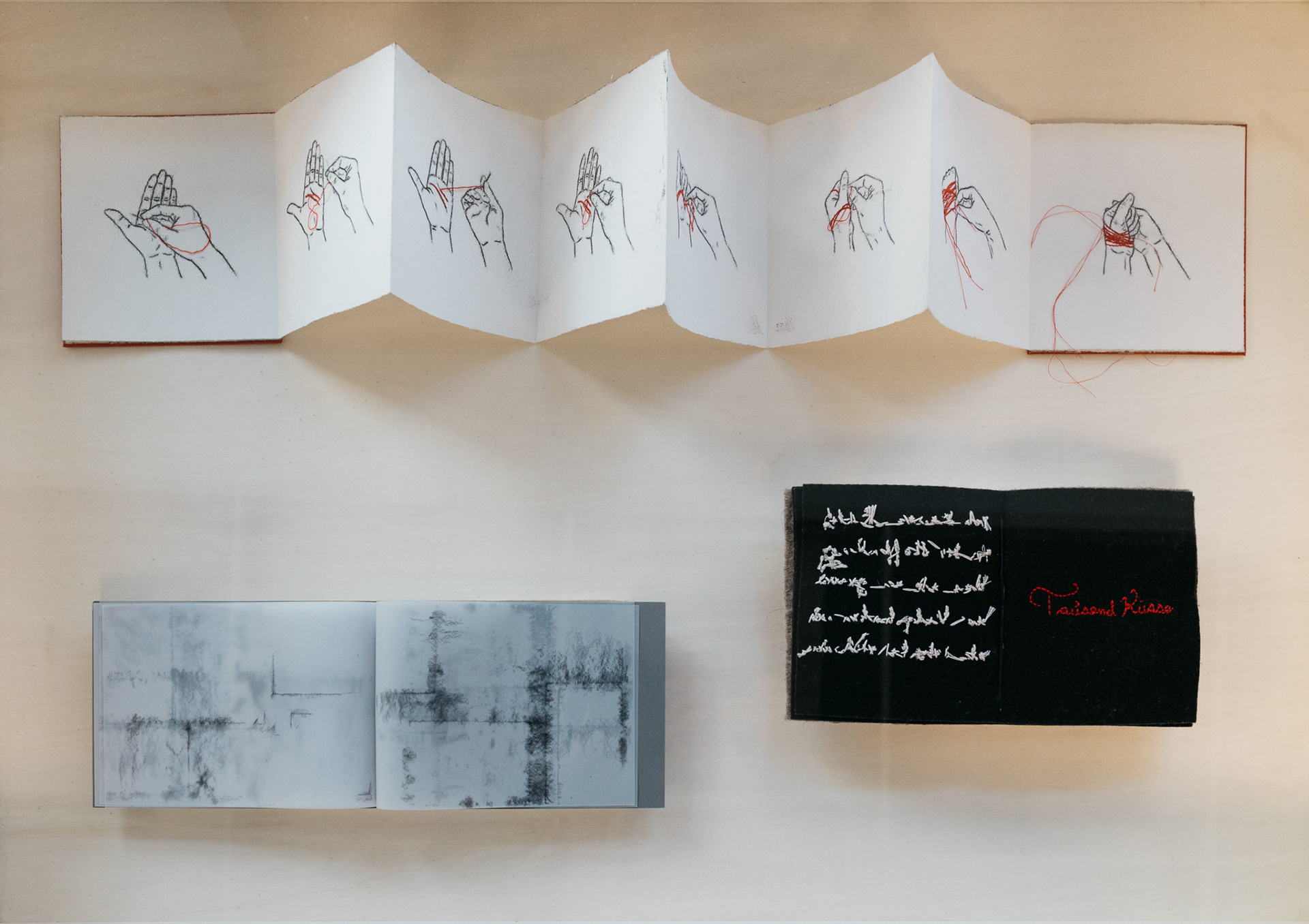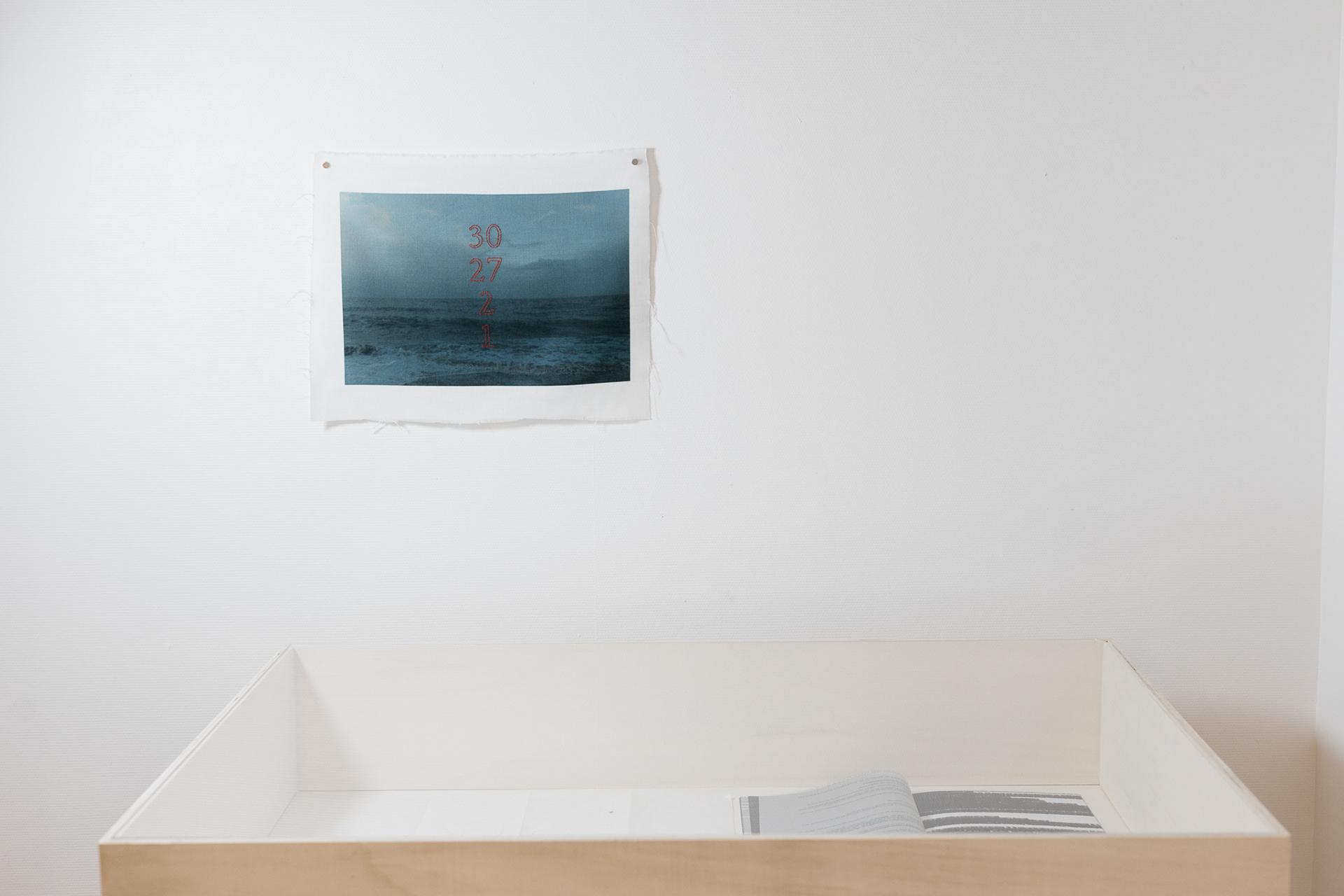LA MER À BOIRE (2024-)
dye sublimation on textile, cotton thread
dye sublimation on textile, cotton thread
EN / FR
On November 24th, 2021, a boat carrying 30 migrants sank in the English Channel while attempting to cross from France to the United Kingdom. Twenty-seven people were found dead, two survived, and one was never found. LA MER À BOIRE features testimony from survivor Mohammed Ibrahimzadeh, embroidered in Sorani Kurdish over textile prints of the English Channel. This testimony, miraculously captured by journalist Zinar Shino mere hours after the disaster, describes his harrowing experience, plus the utter failure—and active, mocking neglect—of French and British authorities to respond to calls for aid.
As a fellow at the Schaeffer Center, I had the opportunity to conduct research trips in the north of France and southern England toward the production of this body of work about the 2021 English Channel Disaster. For this semi-hidden and layered story, I printed images I had taken of the Channel onto translucent fabric using dye sublimation, then hand-embroidered snippets of Mohammed's testimony in Sorani Kurdish. Embroidery is not only an important practice in Kurdish culture; it is a working process of care and reflection. It demands time, attention, and a focusing in: to be close to the detail of a moment, suspended in the intimacy of each word.
These pieces lived with me for weeks, as I carefully stitched into them, pulling the sea through my hands. The ephemeral fabrics layer and ebb over each other, revealing the webs of threads behind. In the absence of a formal archive, the water is situated as witness: serving not only as a reliquary of the lives lost, but as a repository of their memories.
On November 24th, 2021, a boat carrying 30 migrants sank in the English Channel while attempting to cross from France to the United Kingdom. Twenty-seven people were found dead, two survived, and one was never found. LA MER À BOIRE features testimony from survivor Mohammed Ibrahimzadeh, embroidered in Sorani Kurdish over textile prints of the English Channel. This testimony, miraculously captured by journalist Zinar Shino mere hours after the disaster, describes his harrowing experience, plus the utter failure—and active, mocking neglect—of French and British authorities to respond to calls for aid.
As a fellow at the Schaeffer Center, I had the opportunity to conduct research trips in the north of France and southern England toward the production of this body of work about the 2021 English Channel Disaster. For this semi-hidden and layered story, I printed images I had taken of the Channel onto translucent fabric using dye sublimation, then hand-embroidered snippets of Mohammed's testimony in Sorani Kurdish. Embroidery is not only an important practice in Kurdish culture; it is a working process of care and reflection. It demands time, attention, and a focusing in: to be close to the detail of a moment, suspended in the intimacy of each word.
These pieces lived with me for weeks, as I carefully stitched into them, pulling the sea through my hands. The ephemeral fabrics layer and ebb over each other, revealing the webs of threads behind. In the absence of a formal archive, the water is situated as witness: serving not only as a reliquary of the lives lost, but as a repository of their memories.

